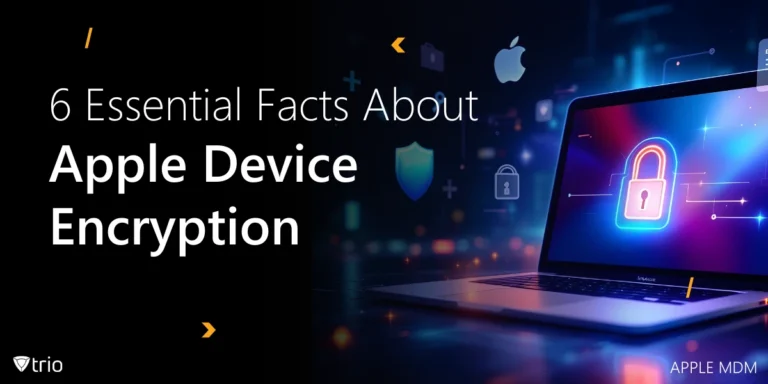Mobile devices have become indispensable in the modern workplace, enabling employees to access company resources from anywhere. However, this convenience comes with significant security risks. As mobile devices increasingly handle sensitive data, they become prime targets for cybercriminals. One of the most effective strategies to mitigate these risks is Multi-Factor Authentication (MFA). MFA adds an essential layer of security by requiring users to verify their identity through multiple methods before gaining access to systems. But even MFA is not foolproof.
A recent article highlights some significant weaknesses in MFA, such as vulnerabilities to social engineering, interception attacks, and the complexities of managing MFA across various devices (Help Net Security). These weaknesses underscore the importance of integrating robust Mobile Device Management (MDM) solutions to enhance the effectiveness of MFA.
Multi-Factor Authentication (MFA) has three primary weaknesses: it can be vulnerable to social engineering attacks where attackers trick users into revealing their authentication codes, interception attacks where hackers capture the codes via phishing or malware, and the complexity of managing MFA across various devices and platforms, which can lead to security gaps.
How MDM Complements MFA
While MFA provides a strong first line of defense, it works best when coupled with a comprehensive MDM solution. MDM platforms enable IT administrators to enforce security policies across all mobile devices, ensuring that they are compliant with company standards before they can access sensitive information. MDM solutions can enforce MFA at the device level, adding an additional layer of protection. For instance, if a device is compromised, the MDM system can quickly revoke access, wiping the device remotely to prevent data breaches.
MDM also plays a crucial role in managing the authentication methods available on each device. By ensuring that devices use the most secure forms of MFA, such as biometric verification or hardware tokens, MDM can help mitigate some of the vulnerabilities highlighted in the article. This dual approach—combining MFA with rigorous device management—creates a more resilient security posture.
Best Practices for Integrating MDM and MFA
To maximize security, organizations should consider implementing the following best practices when integrating MDM with MFA:
- Enforce Strong Authentication Methods: MDM solutions should be configured to require the use of robust MFA methods. For example, biometric authentication can be enforced as a mandatory requirement for accessing corporate apps and data.
- Regular Security Audits: Continuous monitoring and regular audits of mobile devices can help identify and mitigate vulnerabilities before they are exploited. MDM solutions often come with built-in tools for auditing and reporting, making it easier to ensure compliance with security policies.
- Immediate Response to Threats: When a security threat is detected, the combination of MFA and MDM allows for swift action. The MDM platform can automatically lock down compromised devices or restrict access to sensitive data until the issue is resolved.
Conclusion
In an era where mobile devices are essential tools for business, securing them is critical. While MFA remains a powerful tool in the fight against cyber threats, it is not without its flaws. By integrating MDM solutions with MFA, organizations can address the vulnerabilities associated with multi-factor authentication and strengthen their overall security posture. For IT administrators and managers, this combined approach offers a more comprehensive way to protect mobile devices and the valuable data they carry.
Get Ahead of the Curve
Every organization today needs a solution to automate time-consuming tasks and strengthen security.
Without the right tools, manual processes drain resources and leave gaps in protection. Trio MDM is designed to solve this problem, automating key tasks, boosting security, and ensuring compliance with ease.
Don't let inefficiencies hold you back. Learn how Trio MDM can revolutionize your IT operations or request a free trial today!





